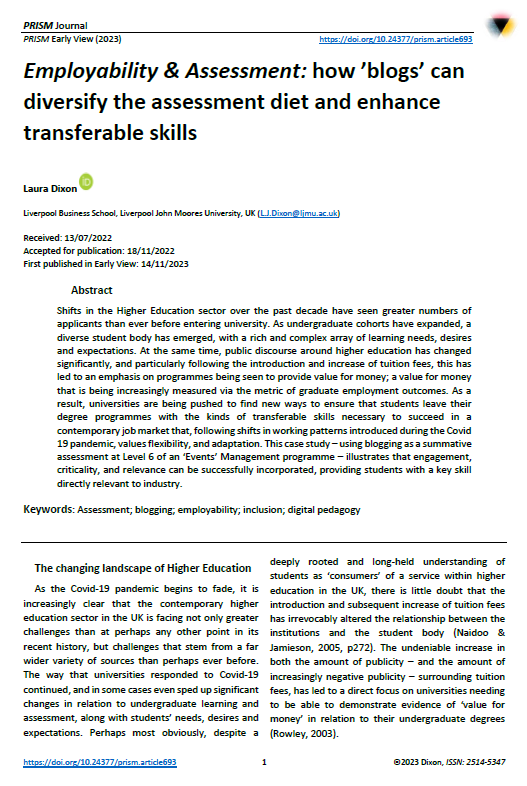Employability and Assessment: How ’blogs’ can diversify the assessment diet and enhance transferable skills
DOI:
https://doi.org/10.24377/prism.article693Keywords:
Assessment, Blogging, Digital, Employability, InclusionAbstract
Shifts in the Higher Education sector over the past decade have seen greater numbers of applicants than ever before entering university. As undergraduate cohorts have expanded, a diverse student body has emerged, with a rich and complex array of learning needs, desires and expectations. At the same time, public discourse around higher education has changed significantly, and particularly following the introduction and increase of tuition fees, this has led to an emphasis on programmes being seen to provide value for money; a value for money that is being increasingly measured via the metric of graduate employment outcomes. As a result, universities are being pushed to find new ways to ensure that students leave their degree programmes with the kinds of transferable skills necessary to succeed in a contemporary job market that, following shifts in working patterns introduced during the Covid 19 pandemic, values flexibility, and adaptation. This case study – using blogging as a summative assessment at Level 6 of an ‘Events’ Management programme – illustrates that engagement, criticality, and relevance can be successfully incorporated, providing students with a key skill directly relevant to industry.
Downloads

Downloads
Published
Issue
Section
License
Copyright (c) 2023 Laura Dixon

This work is licensed under a Creative Commons Attribution-NonCommercial-NoDerivatives 4.0 International License.
Authors retain copyright and grant the journal the right of first publication with the work.
The version of the article published as part of this issue is licensed under a Creative Commons Attribution-NonCommercial-NoDerivatives 4.0 International Licence and allows others to read, download, copy, distribute, print, search, link to the full text of the first version of this article, or to use it for any other lawful purpose in accordance with the license. The author maintains copyright for the article published in this journal.
This journal provides immediate open access to its content and has no submission or publication fees.


